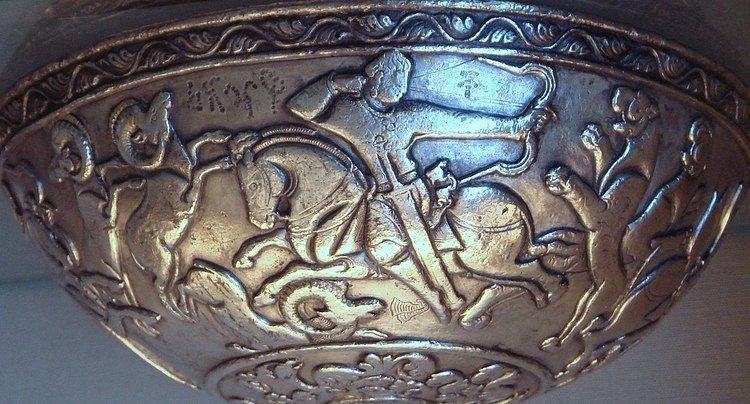 | ||
The Hunas, Hala-Huna, Hara-Huna, Alchon, Alxon, or Walxon were a group of Xionite and/or Hephthalite tribes who, via the Khyber Pass, entered India at the end of the 5th or early 6th century and were defeated by the Indian Gupta Empire and the Indian king Yasodharman. In its farthest geographical extent in India, the Huna empire covered the region up to Malwa in central India.
Contents
Their repeated invasions and war losses were the main reason for the decline of the Gupta Empire.
History
Chinese sources link the Central Asian tribes comprising the Hunas to both the Xiongnu of north east Asia and the Huns who later invaded and settled in Europe. Similarly, Gerald Larson suggests that the Hunas were a Turkic-Mongolian grouping from Central Asia. The works of Ptolemy (2nd century) are among the first European texts to mention the Huns, followed by the texts by Marcellinus and Priscus. They too suggest that the Huns were an inner Asian people.
According to Litvinsky, the initial Huna or Alxon raids on Gandhara took place in the late 5th and early 6th century AD, upon the death of the Gupta ruler, Skandagupta (455–470), presumably led by the Tegin Khingila. M. Chakravarty, based on Chinese and Persian histories believes that the Hunas conquered Gandhara from the Ki-to-lo (Kidarites) in c. 475 AD. Gandhara had been occupied by various Kidarite principalities from the early 4th century AD, but it is still a subject of debate as to whether rule was transferred from the Kidarites directly to the Hephthalites. It is known that the Huns invaded Gandhara and the Punjab from the Kabul valley after vanquishing the Kidarite principalities.
The Hunas are mentioned in the Tibetan chronicle Dpag-bsam-ljon-bzah (The Excellent Kalpa-Vrksa), along people like the Yavanas, Kambojas, Tukharas, Khaqsas, Daradas etc.
The Hunas minted coins inspired by Sassanian designs.
Religion
The religious beliefs of the Hunas is unknown, and believed to be a combination of ancestor worship, totemism and animism.
Sung Yun and Hui Sheng, who visited the chief of the Hephthalite nomads at his summer residence in Badakshan and later in Gandhara, observed that they had no belief in the Buddhist law and served a large number of divinities."
